No Guess Communication
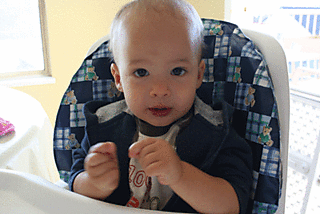
I eagerly said yes when Donielle of Raising Peanuts suggested that she write about baby signing. Having used it with Abbie, and now using it with Caden (that's him on the left- he's signing "more" for a sip of smoothie), I know firsthand the benefits, and they are many! Enjoy this fantastic tutorial!
With babies and toddlers we seem to play a guessing game every day. They whine and cry while we try and figure out whether they need to eat, or drink, or need a diaper change. Or maybe they want teddy, a car, or to read a book. The first couple years of their life seemed to be an endless question mark. But it really doesn't have to be that way.
You can teach your child how to speak before they can actually speak themselves.
Children have a natural tendency to talk with their hands from the time they are infants. They reach and point to objects, they wave their hands about when they're happy or push things away when they get mad. Teaching your child to use signs instead of their screams just makes sense. And it's a lot easier than it sounds.
When my son was about 14 months old, it hit. He started screaming when he wanted something, constantly pulling at me. It was then that I pulled out a couple of my books on infant and toddler care and taught him the sign for please. And the yelling stopped. Just like that, he would quietly stand there and ask "please". I was hooked and wished I had started sooner.
Signing with babies and toddlers works so well because physically, they develop coordination with their hands before they even have the ability to talk and form words. Beginning at a young age is most beneficial, but starting out during the toddler stage, like I did, still helps immensely.
How to start
With no knowledge of ASL (American Sign Language) myself, it seemed very daunting to have to learn all of these signs to teach my young one. In reality though, you'll be learning right along with them so don't worry about having to learn it all before they do. Just pick one sign and use it until you feel comfortable with it and either your baby understands it, or if starting with a toddler, they use it themselves.
- Use the sign. If your child is screaming for something he wants, sign the word (i.e.please)
- Help him to sign it as well before handing over the object he wanted.
- Each time he wants something, take the time to work through the sign until they pick it up themselves. Depending on the age of your child, it could take a day or a couple weeks before they get the hang of it.
- Don't worry if they aren't signing it correctly to begin with. Keep using the correct sign yourself and they'll eventually pick up on it.
- Keep using the signs they have learned and add in more, one at a time.
- Also make sure you say the word aloud as you sign. It's a great way to relate an object or action to the actual word.
Great ones to start with include:
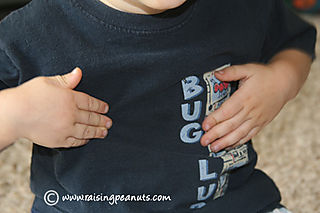
"Please"
(open palm and make a small circle over the chest)
(and yes, he does this one 'wrong', with both hands. He just really wants stuff!)
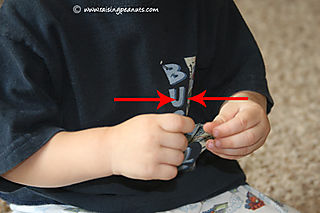
"More"
(thumb and fingers pressed together, bring both hands to touch)

"All Done"
(both hands out to the side and wave them away)
Now that we have a vocabulary of about 15 different need based signs, I no longer have to play the guessing game. At just two, he can't yet speak a lot of real words, but with sign language, he can always tell me what he needs.
There are many books on the subject of baby sign language, but we also love to watch the Baby Signing Time dvd's and the Signing Time t.v. show on our local PBS station. These shows really seem to captivate the attention of little ones as they showcase other kids and babies using sign language and have lots of fun songs. Now don't get me wrong, I'm not into letting babies and toddlers watch a ton of t.v., but I do allow learning shows like these a few times a week. We watch them together so he can see me sign along with it and we both learn new signs each time.
Signing takes patience and perseverance, but it is so worth it in the long run.
What about you? Do you teach your children sign language?
More information on the web:
Our very own signing video from a few months ago
Intellectual Benefits
Emotional Benefits
Video dictionary of signs for little ones (a great way to actually see how the sign is done)
Fox News Youtube video
Donielle is a self proclaimed "kinda crunchy" wife, homemaker, and mom to one sweet little boy who just turned two. Visit her at her wonderful blog, Raising Peanuts!

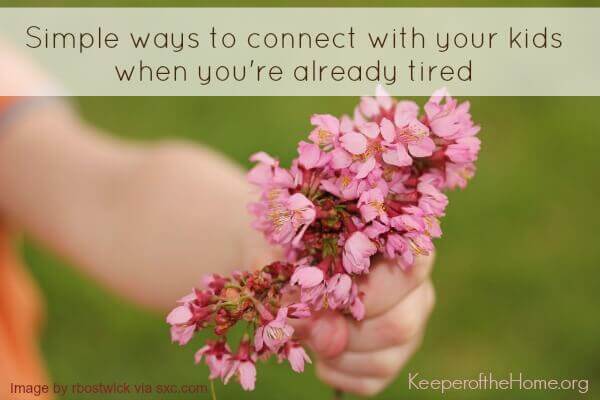


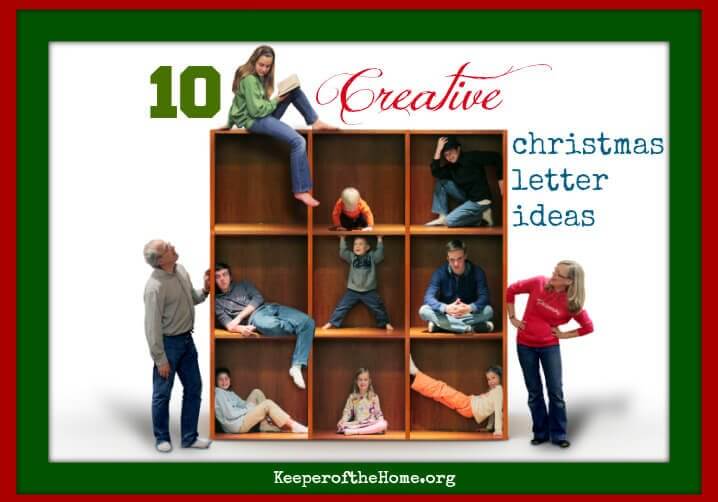

Thank you for writing this! I didn’t use signing with my first two, but we’re adopting from Ethiopia this time and our child may be behind verbally after switching from hearing one language to another. I’m hoping that signing will help him have less frustration and I can’t wait to try it.
Baby signing has been so helpful to us! We started when our oldest was about 8 months old. We only used more, please, thank you and all done with him but it helped TREMENDOUSLY. We started just by showing him the signs when we said the word and by about 12 months he had picked them up and was very good at using them. With our second, we started about 6 months and with big brother showing him as well, he picked them up earlier and started signing back to us by about 9 months!! With him we also added ‘drink’. Our third child is due in 4 weeks and we’ll do the same with her and I’m hoping she’ll pick them up quickly with 2 older brothers to copy!!
We started signing with our first daughter when we started her on solids around 6 months. We started with more, eat, drink and please. We signed and said them at every meal. She didn’t start signing back until around 10 months, but did seem to understand the signs earlier. By a year she was signing 20 words or so and probably peaked around 15 months with 40-50 words. It was so easy and a lifesaver…I can’t tell you how many tantrums we avoided (she is rather strong willed) and how much more pleasant our interactions just knowing what she wanted. We did alot of food and animal signs and sometimes she would ask what the sign was for something and I would have to run and look it up…you really do learn together.There are some great books at the library and ours even has baby board books with kids signing. When we check out books these are her favorite! She has stopped signing alot because she is talking more (21 months now) but we are trying to use them again so she can help teach her baby sister (2 months) when the the time comes. Another note…I got flack from some people who thought she wouldn’t speak as early or as well. But conversely when she did start to speak she already knew all the concepts for the signs she knew and began saying many words right away (and we understood them because she signed with them!). Thanks for bringing this topic up!
great post…and i can’t wait to see you guys next month!
How cool! This definitely sounds like something I’d like to do with my kids someday. It’s great to learn about these things now.
We signed with my oldest, and she was a very early communicator both with sign and verbally. Her pediatrician said he’d never met a 2 yo with the vocabulary she had at her 15 month check up. Then with my three younger girls (triplets) we discovered Baby Signing Time and the Signing Time series of DVDs. Some people are lucky enough to have them on public television stations, but they aren’t on our local PBS. You can order them online at Signingtime.com. The younger three used many more signs than my oldest at an early age, and now they all four have extensive signing vocabularies… not to mention all the actual chattering that goes on in this house with four very talkative girls 3 years old and under! I really believe the ability to communicate early is the reason why they are all so verbal now, and it also saved us many a tantrum!!
I had never heard of signing until my youngest was talking already, so I have no experience with it. My question is… does signing delay development of verbal communication?
Hes, from the research I’ve seen and my own experience (with my own, and also my friend’s children) is that it tends to encourage verbal communication, not delay it. Many children start to use the words as they sign them (because the parent is always saying and signing at the same time), and I think it always helps them to understand the basic concepts of language and communication earlier than they might have otherwise. Anyways, that’s my two cents. Does anyone else have an opinion? 🙂
Hello, I visit your blog daily… thank you for all that you have shared here with me. We are a family of six children and two home schooling parents (one baby in Heaven with Jesus). Anyway, I was learning ASL when I was pregnant with my first baby and so I naturally taught her to sign as an infant. With each subsequent baby, we used ASL in our home and taught the babies to sign. It was not until later that it became “vogue” to teach the baby to sign. Now, our latest baby (who has a rare genetic defect called “Noonan Syndrome”) has learned an extensive amount of signing. It is such a blessing to “converse” with him and the other children through ASL. For the record, learning Sign Language has greatly increased the vocabulary, speaking skills and comprehension of all of our children. I am very thankful for this wonderful way of communication that our little ones have so that they can really express themselves! God Bless You!
I have a baby signing book, and I just never took the time to read it and implement the ideas. I will now! Thank you!
I’m already teaching my four-month-old the word/sign for “nurse.” She has responded a couple of times to it, already.
My best friend is fluent in ASL, and her thirteen-month-old son knows several signs. I’ve seen it prevent meltdowns over and over again.
Stephanie, given your friends’ and your experiences that signing promotes verbal expression, I wonder if children learn a little bit like dogs. Dogs learn commands much faster when a hand signal accompanies each verbal command. They “get” the meaning of the hand sign first, then learn to connect that meaning to the verbal command. I wonder if children are the same way? So cool! I love this stuff!
Stephanie, I just wanted to say thanks so much for giving me the opportunity to guest post!
For all of you out there who don’t have Signing Time on your local PBS station, try the library for the videos! If your actual library doesn’t have it, they may be able to get it from another within the region. That’s how we get them!
And from what I’ve seen w/ friends who sign with their kids, is that it really hasn’t slowed down talking at all. I think some kids are just more apt to talk sooner than others. It’s a physical ability as well as a mental thing.
my nieces learned sign language before they could talk. They are almost 3 now but they still use it.
We didn’t know about this when my nephew was little but I taught him to give kisses instead of “please”. I just couldn’t stand him demanding things. It worked well and I got lots of kisses! *smiles*
We used only a few signs with our 1st and 2nd child since they spoke early and tantrumed rarely. But our 3rd forced us to dig deeper and learn more! He is 2yrs, 9months and still not speaking much. We started with more, all done, yes, food, please, and moved onto to mommy/daddy (when we realized that he wasn’t going to say these like other kids his age), hot, cold, no, stop, help, walk, drive, and the all important ‘banana!’
Many people gave us their opinion about this, telling us that we were just delaying his speech further. But I know that we curtailed many a fit with this communication and had a happier toddler. He sees a speech therapist now who encourages us to continue with the signs even as he learns to speak new words. Baby sign language has been a blessing for us!
Andrea